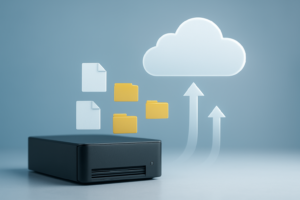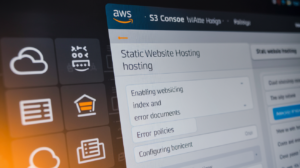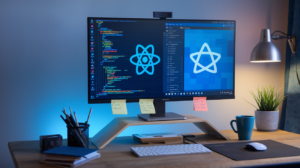Ever been in that nightmare where your Linux server won’t boot and you’re frantically Googling error codes at 2 AM while your boss texts for updates? Yeah, been there.
The Linux boot process isn’t just some technical trivia—it’s the backbone of troubleshooting skills that separate the pros from the rookies. Understanding the Linux boot sequence means you’ll diagnose problems in minutes that would leave others stumped for hours.
From the moment you hit the power button, a carefully choreographed sequence unfolds—BIOS to bootloader to kernel to systemd—each stage building on the last. Master this process, and suddenly those cryptic boot errors become readable roadmaps to solutions.
But here’s the thing about Linux’s boot sequence that most tutorials get completely wrong…
Understanding the BIOS/UEFI Initialization
How BIOS and UEFI differ in modern systems
Ever tried understanding why your new laptop boots differently than your old desktop? BIOS, the traditional firmware, uses a simple 16-bit interface with limited storage addressing, while UEFI offers a modern 64-bit environment supporting larger drives, secure boot, and graphical interfaces. UEFI essentially replaced BIOS as systems evolved, bringing faster boot times and enhanced security features.
The Bootloader Stage: GRUB2 Essentials
A. GRUB2’s role in the Linux boot process
GRUB2 isn’t just any bootloader – it’s the crucial bridge between your hardware and the Linux kernel. After BIOS/UEFI hands off control, GRUB2 springs into action, loading itself from the MBR or EFI partition, presenting that familiar boot menu, and ultimately transferring control to your selected kernel with the right parameters.
B. Key configuration files and their purposes
Ever wondered where GRUB2 stores its settings? The magic happens in these files:
/etc/default/grub– Your go-to for basic configuration like timeout settings and default entries/etc/grub.d/– Directory containing scripts that build your GRUB menu/boot/grub/grub.cfg– The generated config file (don’t edit directly!)/boot/grub/custom.cfg– For your custom tweaks that survive updates
After changes, always run sudo update-grub to rebuild the configuration.
C. Boot parameters and kernel options you should know
Tweaking your boot process? These parameters will save your day:
| Parameter | Purpose | Example |
|---|---|---|
quiet |
Suppresses most boot messages | quiet |
splash |
Shows splash screen during boot | splash |
nomodeset |
Disables kernel mode setting | nomodeset |
single or 1 |
Boots to single-user mode | single |
init= |
Specifies init process | init=/bin/bash |
ro/rw |
Mounts root filesystem read-only/read-write | ro |
Add these to GRUB menu entries or temporarily at boot time by pressing ‘e’.
D. Troubleshooting common GRUB2 issues
GRUB giving you headaches? I’ve been there. Here’s how to fix the most annoying problems:
-
GRUB rescue prompt – Usually means GRUB can’t find its configuration files. Try:
set prefix=(hdX,Y)/boot/grub set root=(hdX,Y) insmod normal normal -
Missing GRUB after OS install – Boot from live USB and run:
sudo mount /dev/sdXY /mnt sudo grub-install --root-directory=/mnt /dev/sdX -
Error: unknown filesystem – Often happens with unsupported filesystems. Boot with rescue media and reinstall GRUB.
-
GRUB loading forever – Check for corrupted config files or rebuild with
update-grub.
E. Multi-boot setups made simple
Dual-booting doesn’t have to be scary. GRUB2 handles multiple operating systems like a champ. Here’s the strategy:
- Install Linux last when possible (its GRUB will detect other OSes)
- For Windows + Linux: allocate separate partitions before installation
- Use
os-proberto detect other operating systems automatically - Edit
/etc/grub.d/40_customfor manual entries:menuentry "Custom OS" { set root=(hdX,Y) chainloader +1 } - Keep Windows on its own partition and never mess with its bootloader
Remember to run sudo update-grub after any changes to refresh your boot menu.
Kernel Initialization Demystified
Kernel Initialization Demystified
A. Loading the kernel into memory
Ever watched your Linux system boot and wondered what’s actually happening? The kernel loading phase is where the magic begins. After GRUB hands off control, your kernel file (typically vmlinuz) gets decompressed and loaded into RAM. This critical moment transforms your hardware from an expensive paperweight into a functioning system, ready to take on the next boot phases.
B. Initial RAM disk (initramfs/initrd) and its functions
Think of initramfs as your kernel’s trusty sidekick. This temporary filesystem packs all the essential drivers and modules your system needs before accessing the real root filesystem. Without it, your kernel would be like a car without keys – all potential but no way to start. Modern Linux distributions use initramfs to handle hardware detection, load necessary modules, and mount your actual root filesystem.
C. Kernel parameter tuning for optimal performance
Tweaking kernel parameters isn’t just for Linux geeks anymore. By adjusting these settings at boot time, you can transform your system’s performance. Want faster boot times? Try “quiet splash”. Need to troubleshoot? “debug” has your back. These parameters live in your GRUB configuration and can be permanent or one-time adjustments. Small changes here can make massive differences in how your system runs.
D. Monitoring kernel boot messages effectively
The flood of text during boot isn’t just for show. Those kernel messages contain crucial information about what’s happening under the hood. Missed them? No worries – just run dmesg after boot. For persistent issues, try journalctl -k to see kernel-specific logs. Getting comfortable reading these messages turns troubleshooting from guesswork into detective work with actual clues.
From init to systemd: The Evolution
A. Traditional SysVinit vs. modern systemd
Remember when Linux boot systems were simple but slow? SysVinit was the OG—sequential and predictable. Then systemd crashed the party around 2010, bringing parallel processing and dependency-based service management. It’s like comparing a trusty old bicycle to a modern electric scooter—both get you there, but at dramatically different speeds.
B. Why most distributions switched to systemd
Major distros jumped on the systemd bandwagon fast—and for good reason. The old init system was showing its age, like that flip phone you kept until 2015. Boot times were painfully slow, dependencies were managed manually, and scalability? Forget about it. Systemd fixed these headaches while bringing standardization across distros that developers had been begging for.
C. Key advantages systemd brings to Linux systems
Systemd isn’t just another init system—it’s a complete management suite that revolutionized Linux. Parallel service startup slashes boot times. Socket and D-Bus activation means services load only when needed. Resource management through cgroups gives you granular control. The unified logging system makes troubleshooting actually bearable. And standardization? It’s made cross-distribution development dramatically simpler.
Systemd Components and Operation
Systemd Components and Operation
A. Unit files and their structure
Systemd’s unit files are the backbone of modern Linux systems. These text-based configuration files define services, mounts, and other system components with a simple .ini-style syntax. Each unit file contains sections like [Unit], [Service], and [Install] that control behavior, dependencies, and activation parameters. The beauty of unit files? They’re human-readable yet powerful enough to orchestrate complex system operations.
B. Target units vs. runlevels
Traditional SysVinit used numbered runlevels (0-6) to define system states. Systemd replaced this with target units – more flexible, descriptive groupings of units that activate together. The old runlevel concept maps to systemd targets, but targets can do so much more:
| SysVinit Runlevel | Systemd Target | Description |
|---|---|---|
| 0 | poweroff.target | System shutdown |
| 1 | rescue.target | Single-user mode |
| 3 | multi-user.target | Multi-user, no GUI |
| 5 | graphical.target | Full GUI environment |
| 6 | reboot.target | System restart |
Targets can inherit from each other and activate in parallel, drastically improving boot times.
C. Understanding dependencies and ordering
Systemd’s dependency system is what makes it tick. Units can specify relationships like “Requires,” “Wants,” “After,” and “Before” to create a sophisticated boot sequence. This isn’t just linear anymore – systemd builds a dependency graph and starts independent units simultaneously.
When a service starts, systemd first activates everything it depends on. The beauty is that only necessary units are started, and parallelization happens automatically where possible. This makes boot times faster and more reliable than ever before.
D. Essential systemctl commands for daily use
These systemctl commands will make you a Linux pro:
# Check system status
systemctl status
# Manage services
systemctl start apache2
systemctl stop mysql
systemctl restart networking
systemctl enable ssh # Start at boot
systemctl disable cups # Don't start at boot
# View loaded units
systemctl list-units --type=service
# Switch targets
systemctl isolate multi-user.target
Master these and you’ll handle 90% of your daily system management tasks with ease.
E. Reading journals and debugging boot issues
Gone are the days of hunting through scattered log files. Systemd’s journald centralizes logging, making troubleshooting dramatically easier:
# View recent logs
journalctl -xe
# Boot-specific logs
journalctl -b
# Service-specific logs
journalctl -u ssh.service
# Follow logs in real-time
journalctl -f
When debugging boot problems, the -b option is your best friend, showing exactly what happened during startup. Use -p err to filter for errors only, cutting through the noise to find real issues fast.
Customizing Your Boot Sequence
Creating custom systemd services
Ever tried building your own systemd service? It’s easier than you think! Just create a simple unit file in /etc/systemd/system/ with your service details, enable it with systemctl enable, and you’re good to go. No rocket science—just a few lines defining what starts when.
Modifying boot parameters permanently
Want those kernel parameters to stick around? Edit your /etc/default/grub file, add your tweaks to GRUB_CMDLINE_LINUX_DEFAULT, then run update-grub. Boom—permanent changes! Your custom parameters will survive reboots, updates, and pretty much anything else Linux throws at you.
Adjusting timeout and default boot options
Tired of staring at GRUB for 30 seconds? Change GRUB_TIMEOUT in /etc/default/grub to speed things up. Set GRUB_DEFAULT to your favorite OS and run update-grub. Now your machine boots exactly how you want it—fast and to your preferred system.
Implementing boot hooks for specialized needs
Boot hooks are your secret weapon for specialized startup tasks. Drop scripts into directories like /etc/kernel/postinst.d/ or create systemd path units to trigger actions based on filesystem events. Perfect for complex setups where timing matters and standard services just won’t cut it.
Boot Performance Optimization
Analyzing boot time with systemd-analyze
Want to know what’s slowing down your Linux startup? The systemd-analyze tool is your new best friend. Just run it in your terminal and bam—you’ll see exactly how long each boot phase takes. Try systemd-analyze blame to pinpoint those resource-hungry services that are making you wait.
Parallel service startup techniques
Bringing It All Together
The Linux boot sequence may seem complex at first glance, but understanding each stage—from BIOS/UEFI initialization through GRUB2 bootloading, kernel initialization, and finally to systemd services—provides valuable insights for both system administrators and Linux enthusiasts. By mastering these components, you gain greater control over your system’s startup process, enabling you to customize boot parameters and optimize performance according to your specific needs.
Whether you’re troubleshooting boot issues, reducing system startup time, or simply satisfying your curiosity about what happens between pressing the power button and seeing the login screen, this knowledge empowers you to take full advantage of Linux’s flexibility. We encourage you to experiment with some of the customization techniques and performance optimizations discussed in this guide—your perfect Linux boot experience is just a few tweaks away.




















